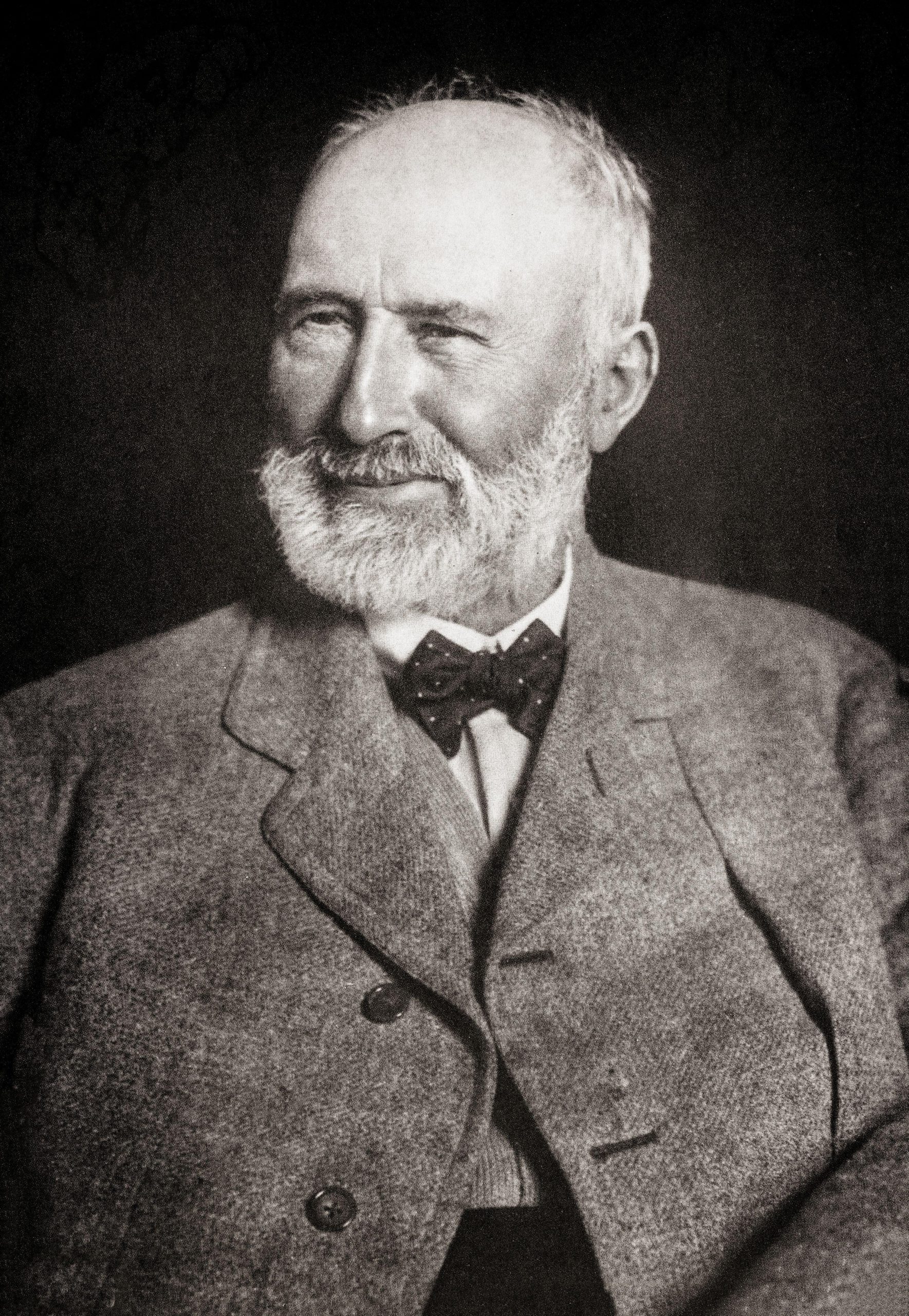
William Robinson
Father of Modern Gardening
15th July 1838 – 12th May 1935
Very little is known of William Robinson’s early life other than he was born in Ireland in 1838, and his father was a land agent. He left school early and worked as a garden boy at Curraghmore, for the Marquess of Waterford, later rising to be foreman gardener for the keen gardener and plant collector Sir Hunt Johnson-Walsh at Ballykilcaven, not far from Dublin. He left rather abruptly in 1861 under mysterious circumstances, and the following year, helped by an influential family friend, David Moore (1808-1879),the director of the National Botanic Garden at Glasnevin, near Dublin, he moved on to employment in London, at the Botanical Gardens at Regents Park. It was here that he was influenced by Robert Marnock (1800-1889), a famous landscape gardener who was known for preferring less formal planting and more natural landscaping.
In the same year that Robinson started work at Regents Park, he spent a month visiting other British botanical gardens, and made a long visit to France, including the Universal Exhibition of 1862, sending reports of his visits to French gardens and plant nurseries back to various gardening periodicals, as well as The Times newspaper.

Robinson was ambitious, and, despite leaving school early, was obviously well educated and a talented writer. He became increasingly well-known and respected, and was elected as a fellow of the Linnean Society in 1866. By the late 1860s he had left his employment at Regents Park and was writing full time. His first two books were based on his experiences travelling in France, and in 1870 he wrote the book which sealed his reputation: ‘The Wild Garden’.

He made a trip to America in 1871, increasing his circle of contacts, and on his return launched his popular weekly magazine ‘The Garden’, followed by ‘Gardening’ (later renamed ‘Gardening Illustrated’). In 1883 he published one of his most renowned books ‘The English Flower Garden’.
In 1885, using the proceeds of book sales and gardening periodicals, he purchased an Elizabethan manor house, Gravetye Manor in Sussex, and started creating what has become an internationally acclaimed garden, surrounded by managed woodland, lakes, farmland and breath-taking vistas of the Weald.
Robinson is renowned for his ‘wild’ and ‘natural’ gardening methods and debunking unnatural and formal planting schemes. When he worked as a young man in the gardens of Regent’s Park, highly elaborate and formal flower beds were all the rage. However, Robinson riled against the labour and cost involved in raising imported tender annuals in greenhouses, and the sheer lack of interest these ‘flat’ gardens showed during winter.
His preference was for low maintenance and natural garden design.
He nurtured mixed herbaceous borders with year-round colour, introduced alpines and exotic species, and planted trees for contrasting texture and pleasing vistas. He planted drifts of bulbs in woodland and meadow settings and grew waterlilies in manmade and natural ponds.
Robinson was passionate about the importance of green open spaces for human health and wellbeing as the Industrial Revolution swept through Britain, and was ahead of his time in promoting sustainability and biodiversity. Little did he know when he was planting thousands of trees and respecting the needs of wildlife in the late 1800s, these activities would become vital in the fight against Climate Change, over a century later.
Although Robinson was ahead of his time in many respects, and is considered by many to be a trail blazer, he was also a man of his times, and in tune with an increasing taste for simplicity amongst his contemporaries, as epitomised by the British Arts and Crafts movement, and a resurgence of interest in the English Cottage garden. He was on a mission to change the way Britain gardened, and in many ways he succeeded. His preference for natural garden design translated to any space, large or small, and his ideas and expertise influences gardeners and landscape designers today.
William Robinson left the Gravetye Estate in his will ‘for the purposes of state forestry’ and public enjoyment. The 30-acre historic garden surrounding the manor house, which includes a flower garden, wild garden, woodland garden, orchard, kitchen garden and multiple glass houses, has undergone a complete restoration since coming under new management in 2010, overseen by Head Gardener Tom Coward. The gardens at Gravetye Manor, now a country house hotel and Michelin starred restaurant, are managed progressively, in homage to Robinson’s life and work. However, the wider estate requires investment and regeneration following a period of fallow.

A letter from G. Jekyll to William Robinson - image courtesy of RHS Lindley Collections

The William Robinson Gravetye Charity aims to restore the estate, acre by acre, using Robinson’s ethos, as a haven for wildlife and somewhere that can be used for scientific purposes. Robinson would not have been aware of Climate Change issues or the loss of native tree species and wildlife through disease and reduced habitat, but he would certainly have been in favour of our aims to redress the balance.
We plan to work with organisations such as Forest Research to plant Climate Change and disease resistant tree species. We will create stunning vistas connected by well-marked trails, rejuvenate hedgerows, and encourage improved biodiversity across all our habitats.
Little known facts about William Robinson…
“A garden, a forest glade with a carpet of Spring flowers, were at once his hobby and his religion. …. He regarded a living tree with a degree of respect amounting almost to veneration. He attested its beauty and its service, and ministered to its welfare as a worshipper at an honoured shrine. England has been enriched by Mr. Robinson’s wonderful knowledge and century of service to the beauty of the English countryside”.





